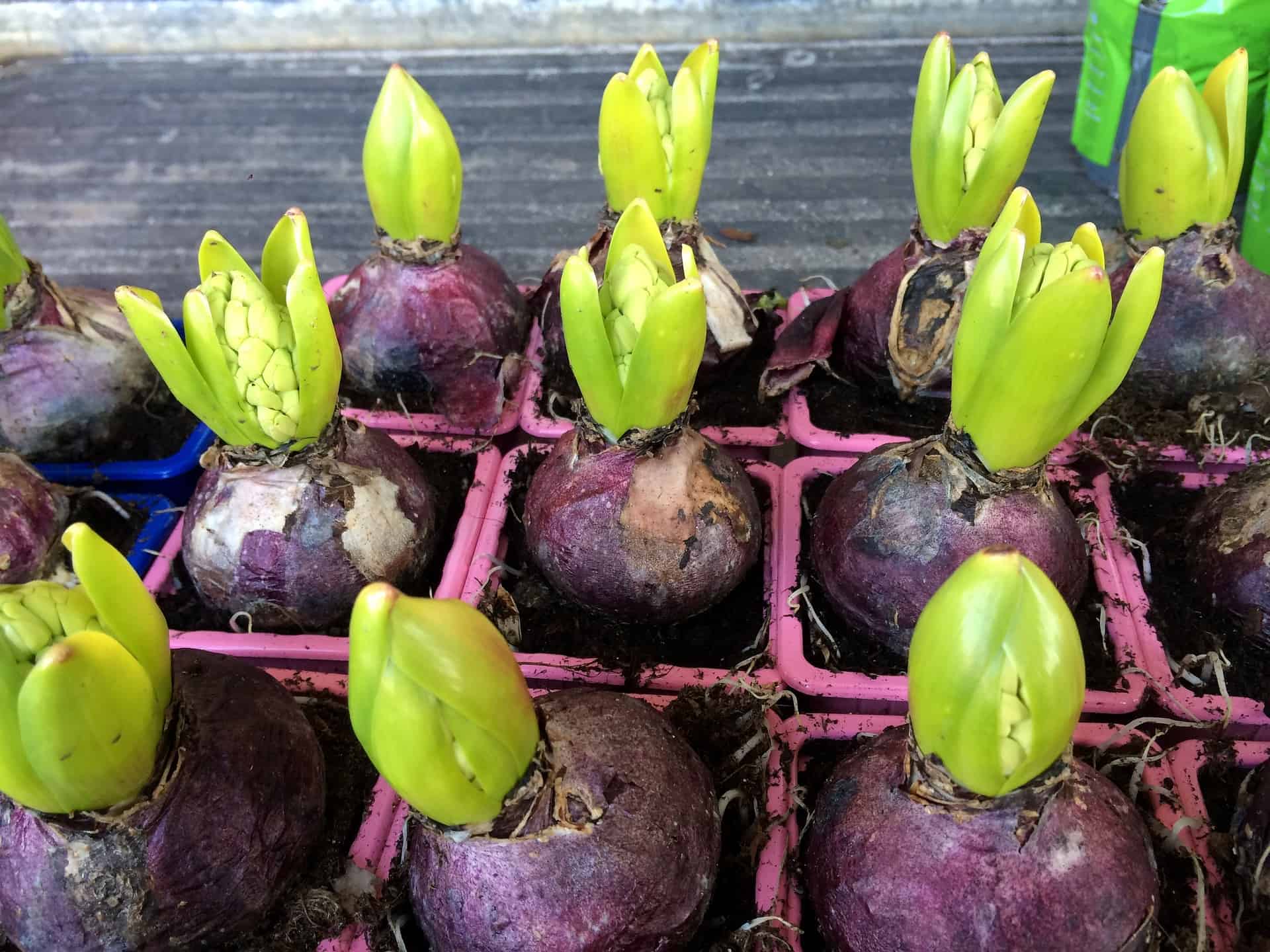When you walk through a springtime garden and feel your soul lift as a heady fragrance hits you, chances are you’ve approached a cluster of hyacinths or grape hyacinths. The beautiful flowers grow on spikes and fill the air with a cloud of perfume only nature could manufacture and vibrant shades of pink, purple, white, apricot, blue, pink, and red.
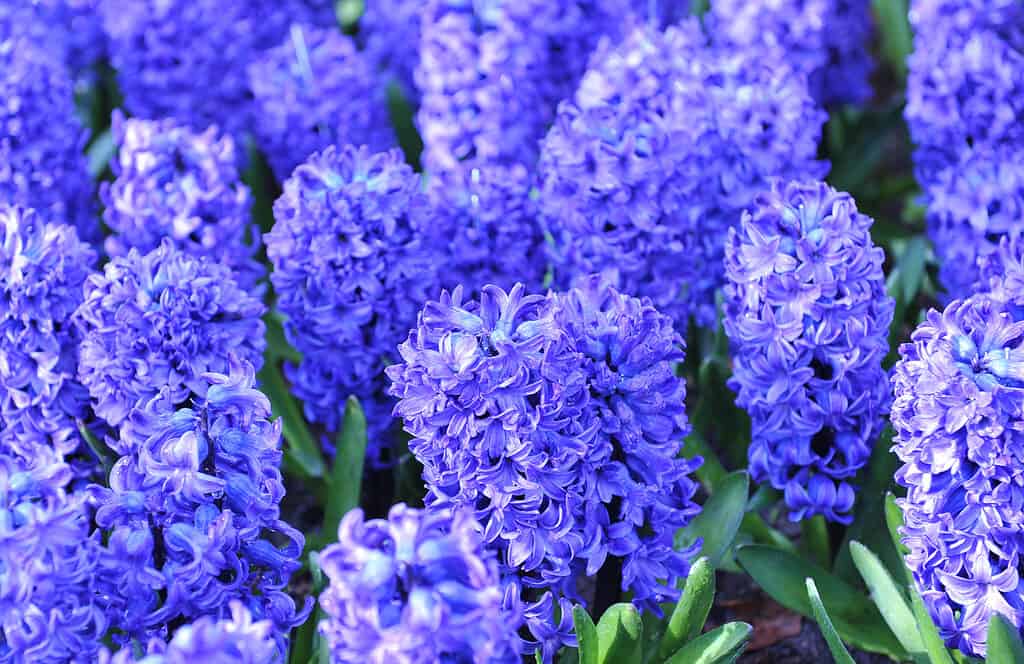
Hyacinths have vivid blooms and heady, sweet fragrance.
©Sergey V Kalyakin/Shutterstock.com
These stunning flowers natively grow in Turkey, Lebanon, and Syria, while grape hyacinth (not technically the same flower but in the same family) grow natively in Europe and Asia. The true hyacinth was introduced to Europe in the 1500s and become popularized by the Dutch who are known for their iconic bulb flowers (think tulips). They developed over 2,000 cultivars of the plant hyacinth, giving us our rich variety today.
Perennial or Annual?

Hyacinths come in many shades including red, pink, purple, white, blue, and apricot.
©Sergey V Kalyakin/Shutterstock.com
Hyacinths are perennial plants, meaning you’ll plant hyacinth bulbs once and they’ll return each spring for three or four more years. The plants do need a cold dormancy period, however, to return, so though they may grown indoors, they make for a better outdoor plant. In warmer climates and indoors, they’re far more likely to be annuals.
Is There a Difference Between Grape Hyacinths and True Hyacinths in Planting Needs?

Hyacinth bulbs just starting to produce
©
Grape hyacinths are part of the same family as the true hyacinth and they require approximately the same growing conditions as each other. Planting and care work interchangeably for the two plants and their cultivars.
When to Plant Hyacinth Bulbs: Quick Answer
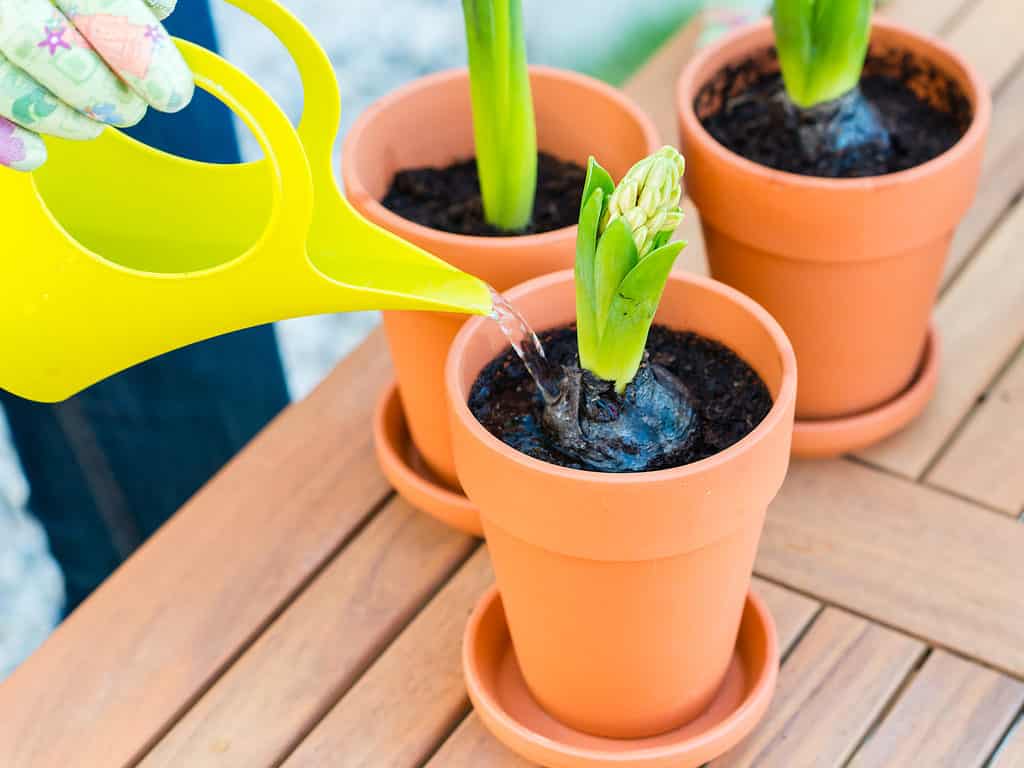
Whether planting in pots or outdoors, they need about 10 to 12 weeks to bring forth flowers.
©iStock.com/bubutu-
Hyacinths are spring-blooming bulbs, so they should be planted outdoors in mid- to late autumn after the first frost but before the first hard freeze. This timing produces flowering in March and April – often around Easter time.
For indoor planting and Christmastime flowering, plant your hyacinth bulbs in September.
Tips for Uses and Placement for Your Hyacinths
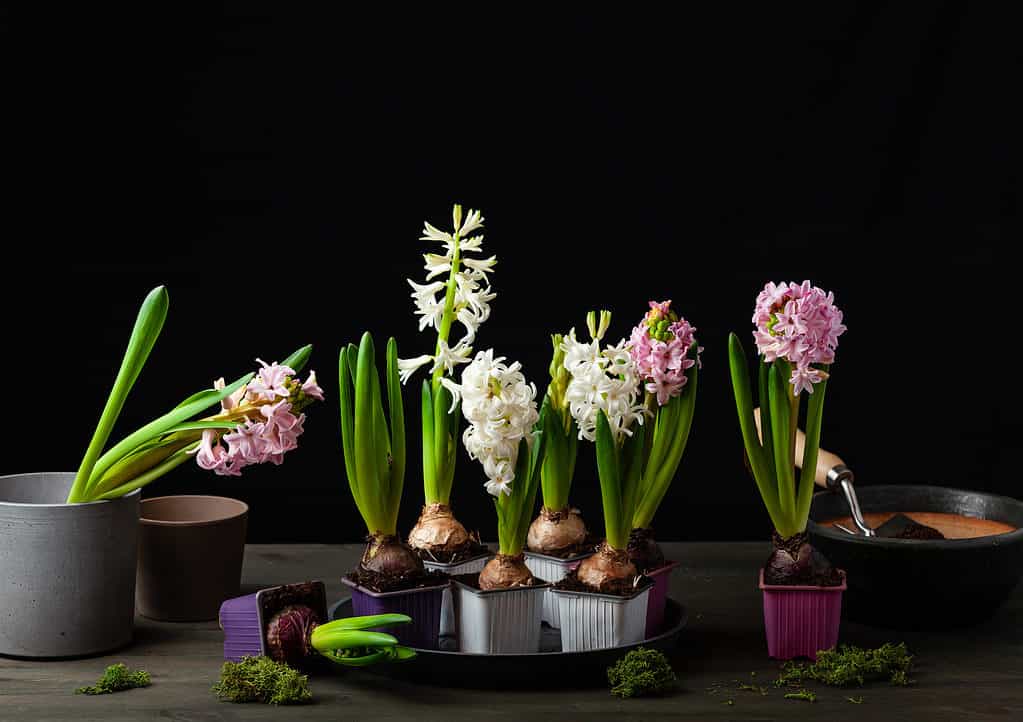
Hyacinths don’t need huge plots of soil. In fact, they may be grown in small vases or as hydroponic plants.
©iStock.com/OlgaMiltsova
- Hyacinths are some of the earliest bloomers of the season, so they are an excellent choice for bee gardens.
- Hyacinths make amazing border plants, particularly along walkways entering the home. This allows you to enjoy the aroma of their heady fragrance the whole pathway walk.
- Hyacinths are often planted with daffodils, early double tulips, emperor tulips, and other early spring bloomers to add vibrancy and fragrance for an early-season display.
- Hyacinths grown indoors thrive as hydroponic plants. They require a special hourglass-shaped “vase” for proper growth, but these are available for sale online and in-person at many garden centers and plant stores. Even many grocery stores offer these as the season begins.
- Hyacinths also do well as container plants. Be sure to plant them 10 to 12 weeks before your preferred bloom time. This is approximately how long it will take the flowers to pop out.
- Place them in full sun for the best effect. They will also flower well in half-day sun or light shade.
- The flowers are winter hardy in Zones 4 to 8 but must be pre-chilled in warmer environments.
- Plant hyacinths en masse to take advantage of their fragrance.
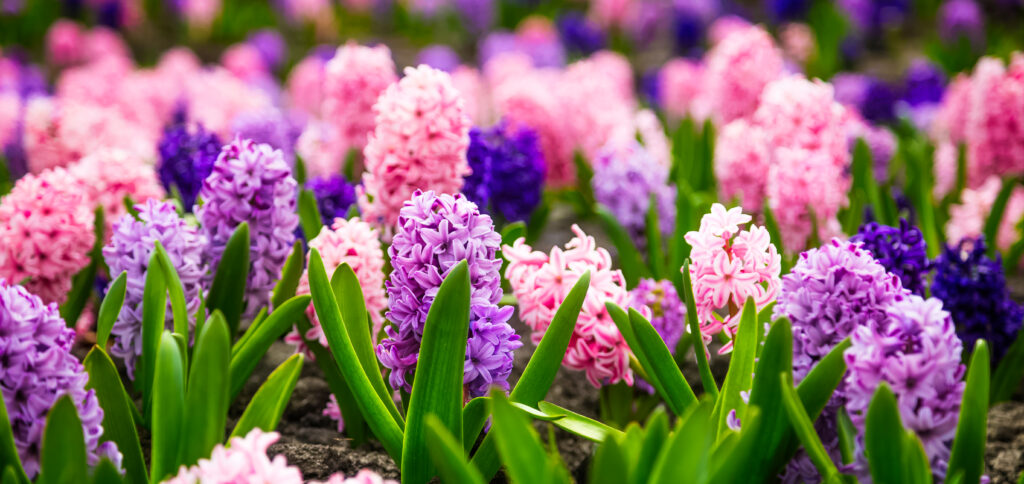
Take full advantage of their heady aroma by planting them en masse.
©Kateryna Mashkevych/Shutterstock.com
Thank you for reading! Have some feedback for us? Contact the AZ Animals editorial team.

